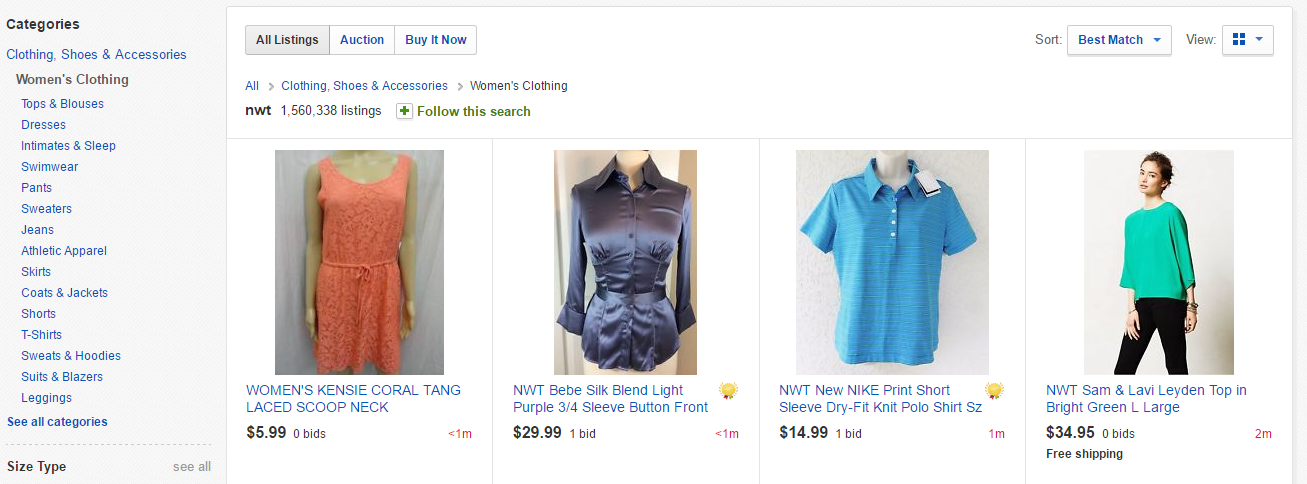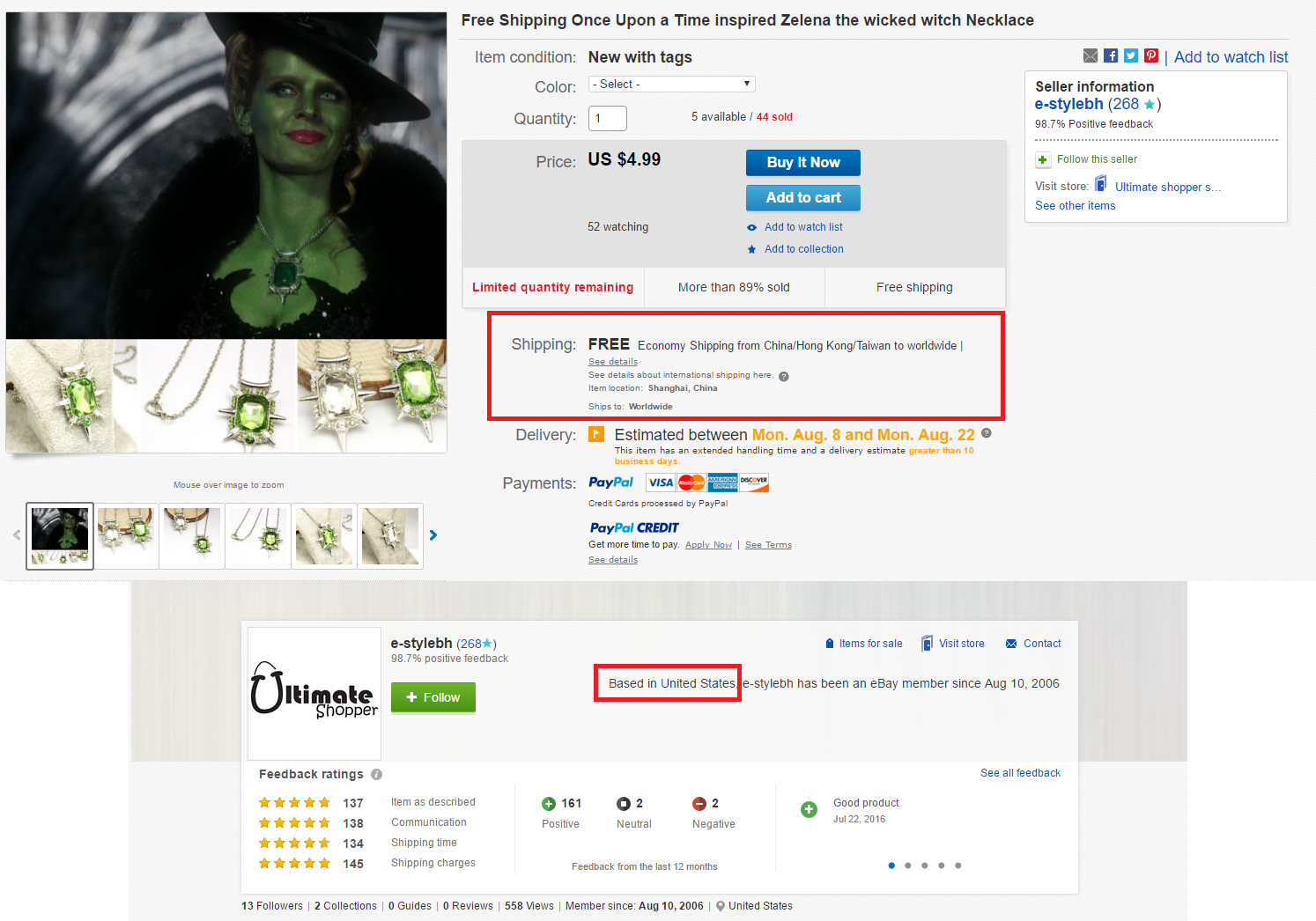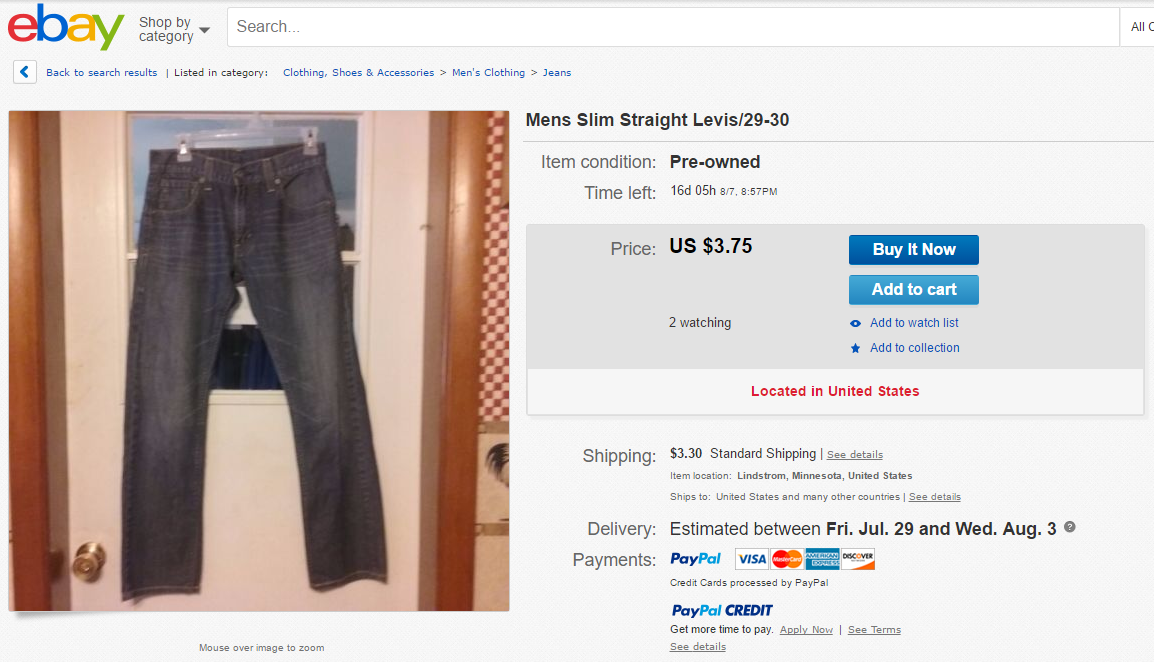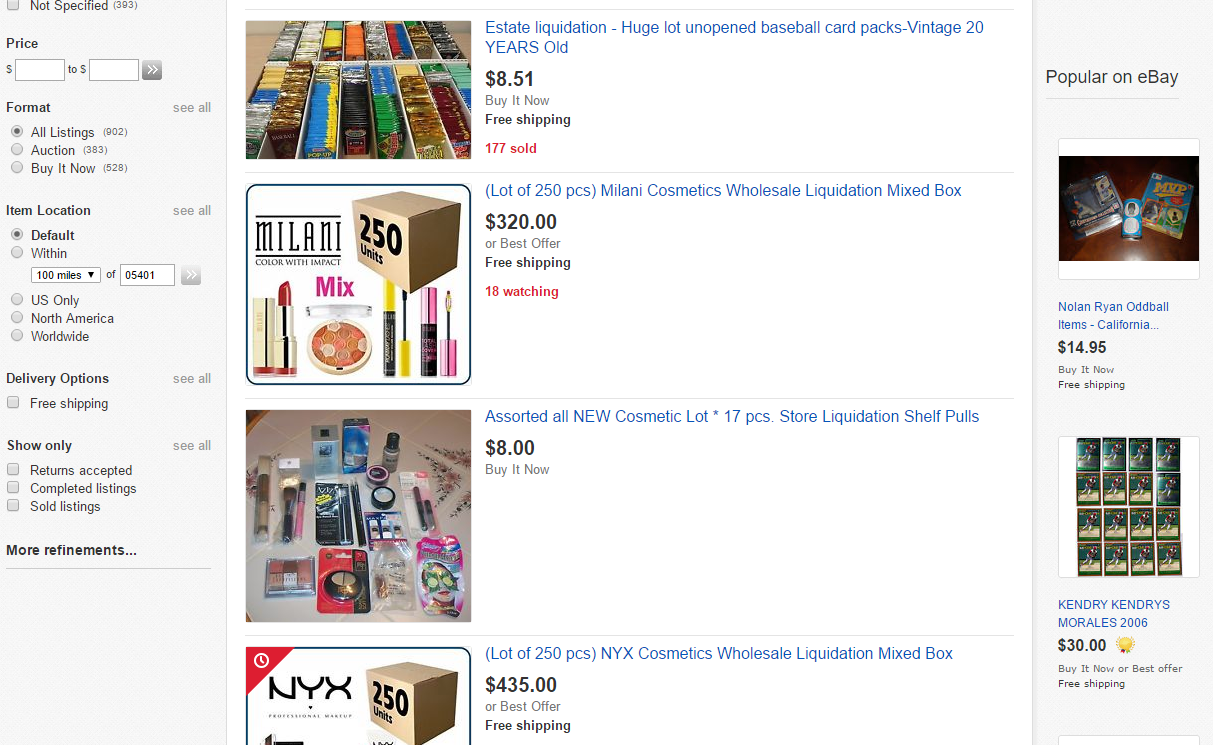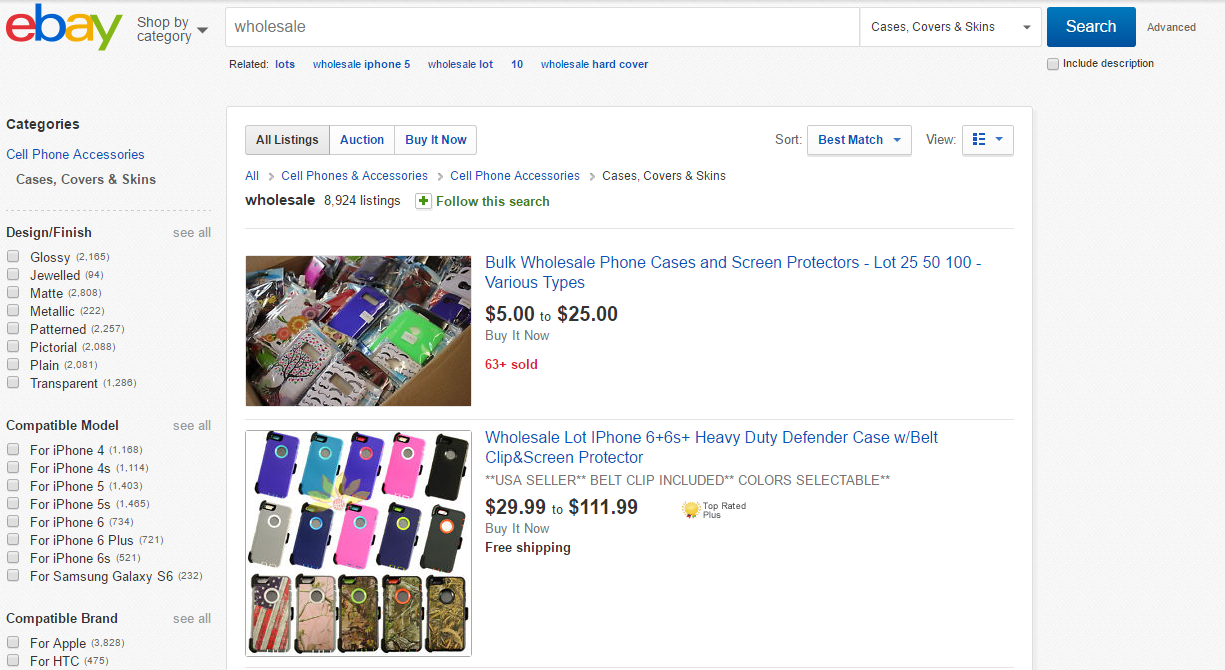Interested in selling on eBay and want to start off with an effective strategy? These six eBay business models work for thousands upon thousands of sellers. Take a look and see which one best piques your interest.
Last updated 4/4/2018.
1. Reselling
Since these articles of clothing are listed as NWT (new with tags) and all the prices end in .99, you can bet good money they're sold by resellers rather than consumers.
The most basic bread-and-butter eBay business model is pure-play online reselling. It works like this:
- Find one or more suppliers (such as manufacturers or wholesalers) and buy products from them by the hundreds or even thousands at a discounted rate.
- Resell the items on eBay at a higher per-unit price than you paid.
- Negotiate lower prices with your suppliers as you become more successful so you can turn higher profits from each sale.
This model can require a significant upfront investment, and you run the risk of losing money on unsold inventory. However, once you start selling an item consistently, it becomes a reliable source of revenue.
2. Dropshipping
With their items shipping from China, this US-based seller appears to be a successful dropshipper.
Did the idea of losing hundreds or thousands of dollars on unsold inventory put you off your breakfast? If so, you might prefer dropshipping to reselling. Here’s the business model:
- Find a supplier who offers dropshipping services and settle on a price per item. (No buying in bulk here.)
- List dropshipping-eligible items on eBay.
- When somebody buys through one of your eBay listings, you collect the money from the buyer, buy the item from your supplier, and tell them to ship it to your buyer rather than to you.
You have no risk of losing money on inventory and don’t have to deal with any of the hassles of shipping or storage. The entire business is managed from your computer, with maybe the occasional telephone call thrown in.
The biggest downside: high competition. Plenty of other people use this business model already, and you can bet they’ve dropped their prices as low as they can for a lot of products. You may have a tough time finding something you can dropship at a worthwhile price.
3. Retail Arbitrage
Stick this on a clean white background and use good lighting, and its value might suddenly quadruple.
Ever look at an item on eBay or at a yard sale, pawnshop, or even an old-school auction and think “Man, I could sell that for three times that price”? Retail arbitrage is acting on those thoughts.
The business model is simple:
- Find something being sold at an outrageously low price. This might be because the seller doesn’t understand the value of the item, just wants to get rid of it, or couldn’t market to save their life and therefore can’t get anyone to pay them the item’s value.
- Create a fantastic listing for it on eBay and sell the item at a profit.
This system can work out magnificently for talented bargain hunters, especially when dealing with big-ticket items like used vehicles and consumer electronics.
The downsides are the high levels of risk and the need to constantly be on the hunt for new things to sell. Some people also can’t manage it because they feel bad paying much less than an item’s value and then turning around and selling it for a profit.
4. Liquidation/Surplus
Liquidation works quite similarly to retail arbitrage. Let’s get straight to the steps:
- When retailers or organizations can’t sell / find a use for some of their stock (think last season’s fashions or surplus military equipment), you buy it at a fraction of its value to free up their storage space.
- You identify the items that are worth trying to resell and list them on eBay.
This is as risky and labor-intensive as arbitrage, but on a bigger scale.
You may need to spend hours or days sorting each lot, taking photos of the many unique items, and creating listings for each of them. You’ll also have an extremely hard time finding a reliable supply of new goods. Unless you can work out a special deal (such as being the liquidator for a fashion retailer that clears out its inventory every few months), you’ll always be on the hunt for more.
Yet this can be one of the most profitable eBay business models. Anyone with the knowledge and instinct to turn one man’s trash into another man’s treasure has good odds of making a killing this way.
5. Wholesaling
Who says you have to be a retailer to succeed on eBay?
Quite a few retailers source their items on eBay itself, taking advantage of the extensive buyer protection to avoid the risks involved in buying through sites like Alibaba. The margins may be a bit tighter, but for many sellers the security is worth it.
As a wholesaler, you’d supply retailers through eBay. The business model goes like this:
- You find manufacturers willing to sell in extremely large quantities for extremely low prices.
- You break the items up into lots, perhaps as small as four items or perhaps as large as 1,000, and sell them to both retailers and consumers for very low prices.
This system saves you a lot of picking and packing and dealing with buyers. However, it does have its disadvantages.
The biggest problem is the enormous upfront expense. You might have to pay $10,000 per shipment to get a competitive price from a manufacturer. This also means that you’ll have tons of inventory at risk at all times.
In addition, many manufacturers won’t work with you unless you have an established and proven business.
These disadvantages make it a poor choice for the beginning eBay seller. But for experienced businesspeople, it can prove highly profitable.
6. Deep Niche
Going “deep niche” means finding a small market of extremely dedicated buyers and catering to their refined tastes. You can only succeed here if you have an extremely deep knowledge of the subject, but it’s a great way to turn your hobby or previous work experience into a profitable business.
Here’s how it works:
- Find something very specific you know a lot about; don’t think “comic books” or “fishing” so much as “Deadpool collectibles” or “hand-tied flies for smallmouth bass fishing in the northeastern US.”
- See if a market exists for related items on eBay and whether there’s enough demand for you to work your way in.
- Source these specialty products or even create them yourself (if legal) and sell them on eBay.
- Prove to your customers that you know what great customer service means and make sure that the items you sell are of the highest quality. Odds are, virtually all your customers read the same forums or niche publications, and one bad review could sink your whole business.
You can’t fake your way into this business model. You have to know the audience inside and out because you’re part of it yourself: a lifelong turkey hunter, a hardcore tabletop gamer, a collector who could easily open a museum.
Even for those who are part of the deep niche, this model does have risks. Supplies could become too scarce even for a serious collector to continue finding enough for a business, the fandom could die out, etc. Both the supply and the demand could easily fall through.
But, as long as you can make it last, you can make a very good living here. Your buyers can become fiercely loyal, and few other sellers will have the knowledge needed to compete. You may therefore have a steady stream of profit and zero competition for the lifetime of your business.
Summary
We haven’t covered all of the eBay business models in existence, but these are some of the most popular and likely to succeed. Just remember that they all have risks! Take the time to research eBay selling before diving in—I’d start with “Selling on eBay for Beginners: 5 Steps to Success.”





